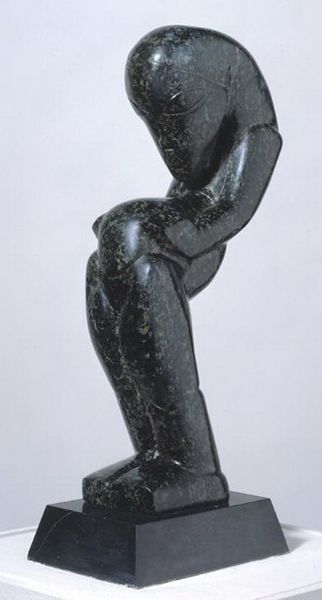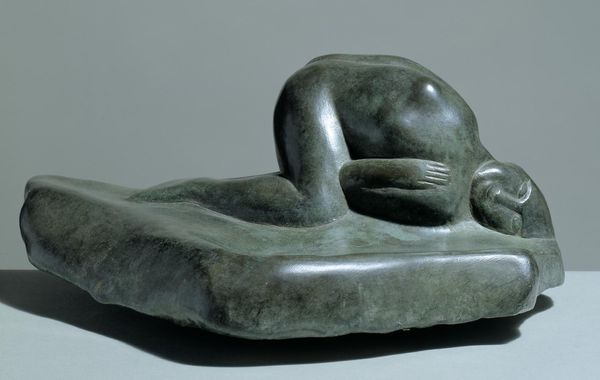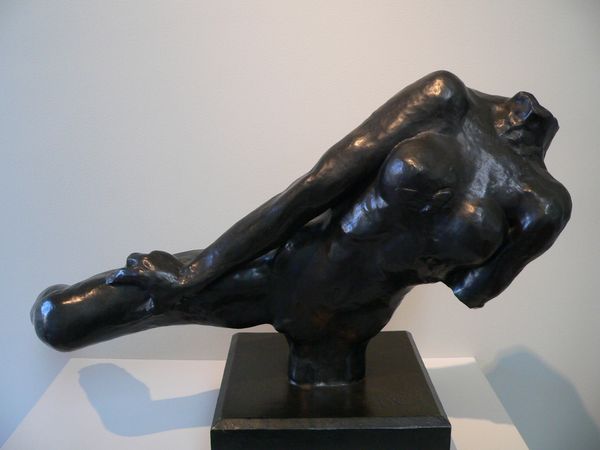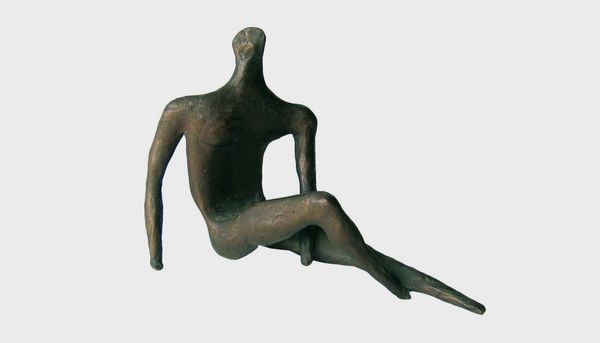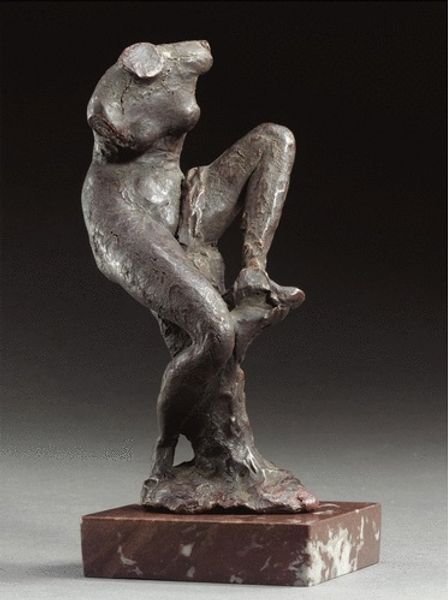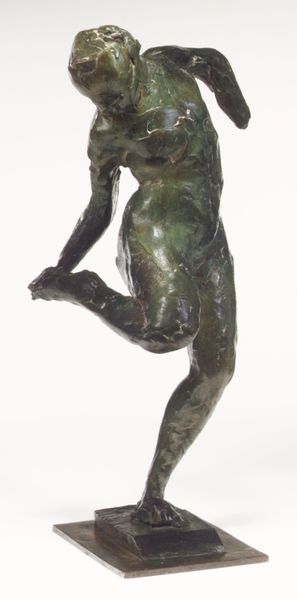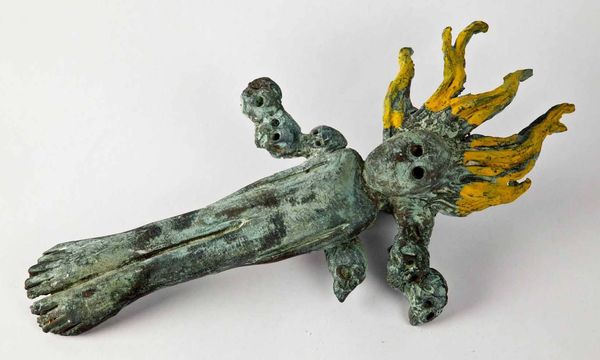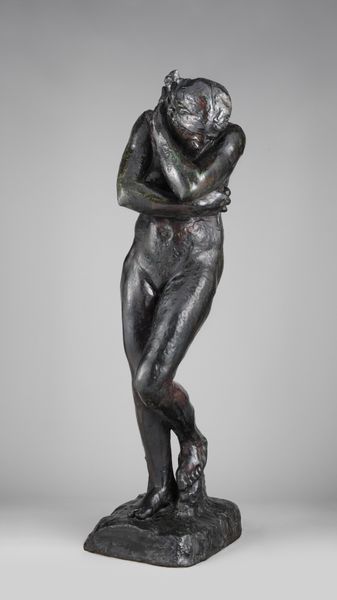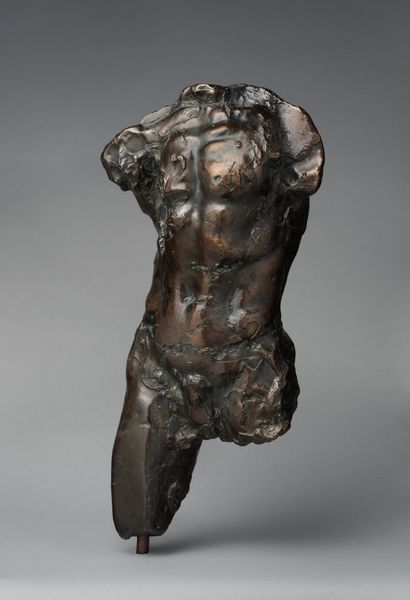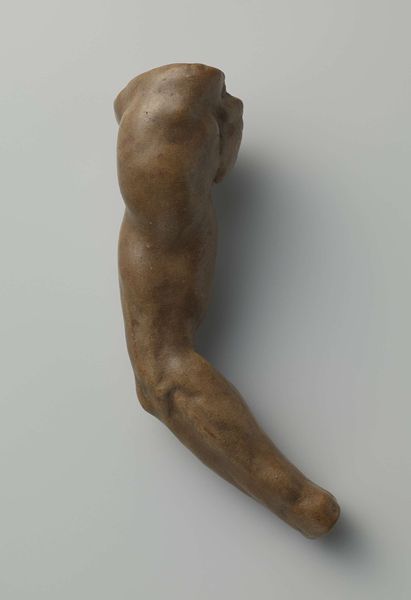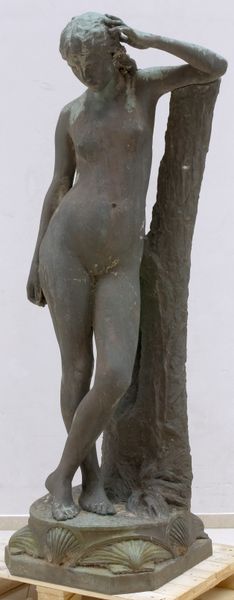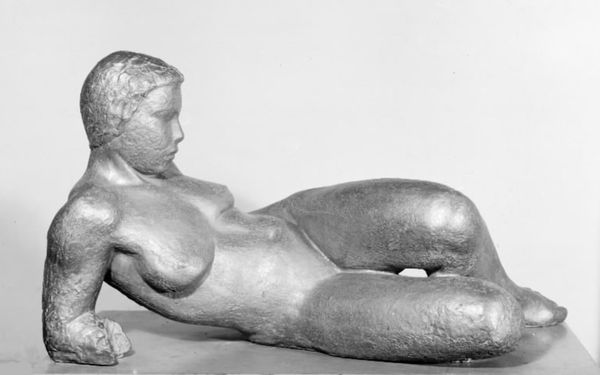
bronze, sculpture
#
portrait
#
statue
#
sculpture
#
bronze
#
figuration
#
vorticism
#
sculpture
#
nude
#
realism
#
statue
Copyright: Jacob Epstein,Fair Use
Editor: This is Jacob Epstein's "Reclining Nude Turning," made of bronze in 1946. I find it so intriguing how the figure twists, almost as if caught in a moment of reflection. What strikes you most about this sculpture? Curator: The interplay of volumes in this sculpture is remarkable. Notice how Epstein contrasts the smooth, elongated lines of the limbs with the denser, more textured torso. The twist you mentioned creates a dynamic tension. How do you think that tension functions within the composition? Editor: Perhaps it emphasizes the vulnerability, but also the power within the figure? Like she's both surrendering and commanding attention at the same time. Curator: Precisely. Furthermore, consider the use of light and shadow across the bronze surface. Epstein masterfully utilizes the material to create depth and definition. Observe how the light catches the raised areas, highlighting the form, while the recessed areas recede into shadow. Editor: It really does bring out the dimensionality. Are there specific techniques he used to get that effect? Curator: He certainly employed a rough modeling technique, allowing the marks of his tools to remain visible, enhancing the texture and tactile quality. It is an appeal not to flawless, academic beauty, but rather an honest observation of the human form. Editor: I hadn't thought about the rough texture adding to the expressiveness. Curator: By focusing on the inherent qualities, Epstein encourages us to contemplate not just the subject, but the artistry, the form, and the raw beauty present in both. Editor: I'll definitely look at bronze sculptures differently now, paying closer attention to how light and texture play such key roles. Curator: And I am happy to have discussed those key features. Form and light are elemental.
Comments
No comments
Be the first to comment and join the conversation on the ultimate creative platform.
